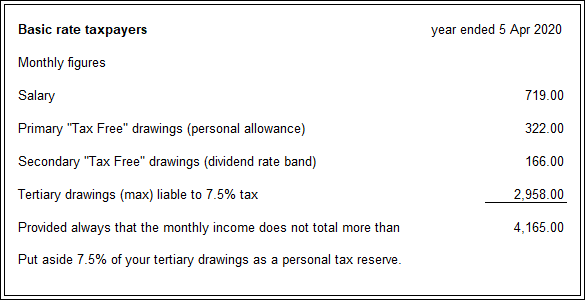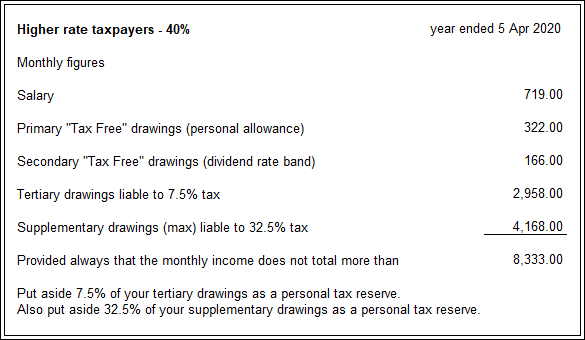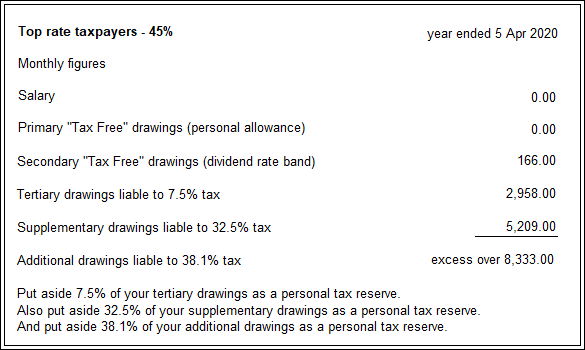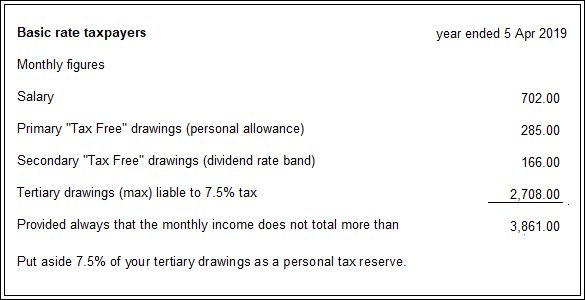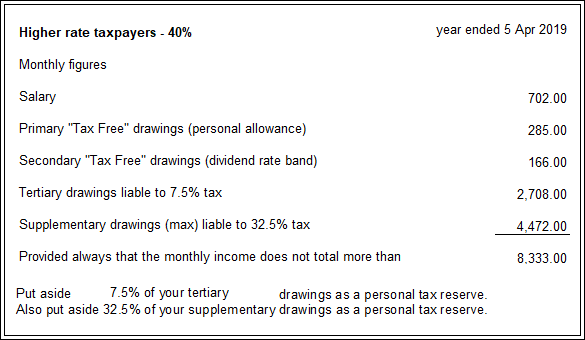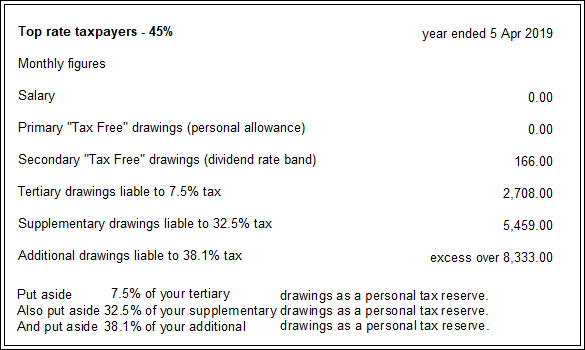A Checklist
Self assessment tax returns require an extensive amount of personal information.
They encompass income, capital gains, outgoings, residence status, student loans, child benefit and more. They are no longer called income tax returns and you need to take care to include everything that a self assessment tax return requires.
With very few exceptions, the self assessment tax return requires a full disclosure of your worldwide income. There are checks and balances to ensure that you are not subject to double taxation. As your accountant, we need you to make a full disclosure of everything. We would rather have too much information than not enough. Nobody wants HMRC to start an enquiry because something was omitted from a tax return.
You should remember that in UK law the final responsibility for submitting a full and complete tax return (and for paying the tax on time) rests with you, the taxpayer.
Please follow this guide carefully and let us have the information and the documentation detailed below. For self assessment purposes the tax year started on 6 April (more than one year ago) and ended on the 5 April which has recently passed.
1. Tax Return Notice
In order that we can keep track of dates, tax offices and reference numbers, please let us have either a copy of page one of your tax return, or the “Notice to File”.
HMRC get things wrong sometimes. It’s important that we have this document in case any disputes arise. Without the notice it may be difficult to challenge interest charges and penalties. That can depend on many factors, including the date on the notice, the spelling of your name, the address it was sent to, and whether or not it was even issued.
If you do not have a paper document within a few days of 5 April, then please provide us with a copy of the digital “Notice to File” from your personal tax account on the Government Gateway. Accountants cannot access your Gateway account as it covers many Government services and not only tax.
Please note that you know that when you go to your personal tax account online will be asked to agree to communicate digitally by default. If you consent, subsequent communication including statutory notices will be sent digitally, and you will never again get a paper version.
2. Changes since last year
Have you changed your address, your phone number, your name (by marriage or otherwise), or have you married (or entered into a civil partnership)? Please keep us up to date with your correct details.
3. Student Loans
A copy of the Student Loan account statement showing the transactions between 6 April last and 5 April just gone.
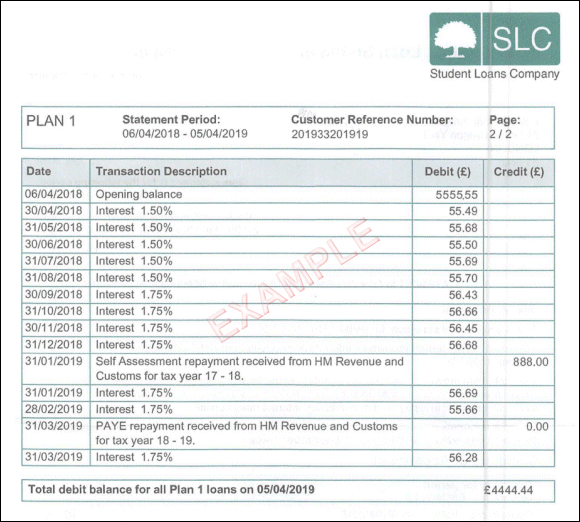
Tell us if an old loan has been fully paid off since 5 April just gone as we will need to make an adjustment to ensure that you do not overpay.
You cannot get this data from the Student Loan Company web site. Yes, ridiculous, we know! Send them a paper letter as set out in this report and ask them for a paper statement.
4. Residence and Domicile
Are you resident outside the UK? We will need a detailed schedule of the days you have spent in the UK during the past tax year (from 6 April to 5 April), detailing the date of arrival and the date of departure. Of those days, how many were for social purposes and how many were for work purposes? A UK work day only counts as a work day when you did more than 3 hours of work in the UK on that day.
Is your Domicile outside the UK?
In UK law the word “domicile” does not mean your address, it means your natural home. This is especially important for people who were not born in the UK or whose parents were not born in the UK, or for people have moved away from the UK and have permanently elected (and proven) that they have established a natural home elsewhere.
There are complex tax rules for people who have a non-UK domicile and who have foreign income or gains. Regardless of your “domicile”, UK residents are taxed on their worldwide income or gains. However, if you do have a non-UK domicile, you may be entitled to claim tax relief on foreign income which is not remitted into the UK. If this applies to you please discuss the situation with us.
If you are not resident in the UK, then we need to consider the Statutory Residence Test which determines residence status for tax purposes. This link is just for information . . .
https://www.gov.uk/government/publications/rdr3-statutory-residence-test-srt
. . . and we will work through the process with clients who are affected.
5. Bank Interest and other Investment Income
Investment income like bank interest and dividends are taxed according to the date they are paid, not the date they are declared. Please be sure to check you have figures for the right year, especially if payment dates fall close to 5 April.
Please provide copies of certificates of Bank Interest Received, dividend vouchers and other documents showing amounts of investments received. Banks and other financial instutions are required in law to provide you with these certificates. They submit the same documents to HMRC as part of the financial instution’s tax reports, so we need to be sure that the figure on your tax return is the same figure they told HMRC.
Some banks pay “rewards” and do not pay interest. Check the year end certificate from your bank to see precisely what sort of income you have. Some deduct tax at source, whilst others do not. Different rules, rates and allowances apply to different types of investment income so it’s vital that you provide full and accurate information for every different account and every different type of investment.
6. Employees and Directors
A copy of form P60 for all roles held as at 5 April.
A copy of form P45 for all roles that ended during the tax year.
Employers are required by law to issue forms P60 by 31 May following the relevant 5 April. Forms P45 are issued when you leave an employer, normally within 7 days of your leaving date.
7. Student Loan Repayments via Payroll
As the forms P45 and P60 do not always show student loan repayments, we need a copy of every payslip for each employment you had between 6 April last year and 5 April this year. This recent data is not yet on the Student Loan Co statements, hence we need the payslips.
8. Benefits in Kind and Expense Allowances
If you have a company car or van, or if your salary package includes things like private medical insurance or gym membership, then you might be issued with a form P11d. These are taxable benefits in kind.
There are a few other cases where forms P11d are issued to employees who receive expense allowances. This is less common than it used to be, because HMRC has introduced more exemptions.
For example, a situation where you have paid for business travel, claimed the exact figure, and were reimbursed the exact figure, is exempt from the P11d reporting rules. However, round sum allowances are reportable. Check with your employer if you are not sure about the expense allowances you received.
We will need a copy of form(s) P11d issued “as at” 5 April for all roles held in the last tax year (whether they were still active on 5 April, or not).
Employers are required by law to issue forms P11d (to relevant employees) by 31 July following the relevant 5 April. However, if a P11d is not relevant to you, the employer is under no obligation to tell you that you’re not going to get one. Some employers tax benefits in kind via the payroll, some do not. A process known as “payrolling the BIK”.
Check! Ask “am I due a form P11d”?
9. Receiving an Occupational Pension or a Private Pension Annuity
A copy of the form P60 (or other statement from your pension provider) as at 5 April, showing the gross pension received by you, and the tax deducted.
Pension providers (other than the State Pension) are required by law to issue forms P60 by 31 May following the relevant 5 April.
10. Receiving a State Pension
Annual letters detailing State Pension rates and entitlements are normally issued towards the end of March setting out what your individual rate is. Very few people receive the ordinary rate of State Pension, because the amount is often enhanced by the level of your national insurance contributions. We cannot rely on headline rates, and we need a copy of that letter setting out the rate specific to your case.
This report has more detail of what happens in year one and later years.
11. Child Benefit
Please let us know how much Child Benefit was received during the tax year. Child Benefit may be restricted in some cases where your income is high. See this report for the thresholds.
If you (or your spouse/partner) have children aged 18 or younger then, regardless of whether you receive Child Benefit or have disclaimed it, please let us have a note of each date of birth for those who were aged 18 or below on 5 April just gone. Child Benefit may still be paid in connection with 18 year olds until 30 September following their 18th birthday. Having this information allows us to accurately establish two types of situation:
– Claimants where a claw back becomes due;
– Non-claimants who may now become entitled to claim.
There are complex rules in cases where you or your partner move out or move into the family home part way through a tax year. If this applies to you, please talk to us on a one to one basis.
12. Self Employed Trades and Partnership
Please consider the Annual Accounts Checklist
13. Rental Income
Please consider the Lettings Accounts Checklist
14. Personal Pension Contributions
By “personal pension” we mean a pension policy agreed by you directly with a Pension Provider and paid for using your own private funds.
Personal pensions agreed with a Pension Provider because you are a company director (and your company pays the contributions) are not reportable on a personal tax return – ignore these.
Pension Providers normally issue a certificate PPPC (for each policy) just after 5 April each year.
Please provide a copy of each certificate PPPC or set out an analysis of dates and amounts paid under each separate pension policy, stating whether these were paid gross or paid net.
15. Auto-enrolment Pension Contributions
Under auto-enrolment in the UK, you may have an employer pension where contributions are taken by deduction at source from your pay. There are four ways of doing this and your employer will have elected for one of them when the pension scheme started.
Check with you payroll office, and tell us which “Pension Contribution Basis” applies to these deductions:
• After tax and NI with basic rate tax relief
• After tax and NI with no tax relief
• Before tax and NI
• Before tax and after NI
Please provide us with copies of all your payslips for the tax year as that’s the only way to see the full pension deductions for the year.
16. Gift Aid Contributions
Please provide two analyses showing the name of each gift aid scheme, the commencement date, and the amounts paid. One list is for your regular contributions. The second list is for one off payments for the tax year only.
17. Sundry
Lastly, please consider if any of the following items need looking at more closely:
• New sources of income in that tax year.
• Job Seekers Allowance or other taxable benefits.
• New stock options.
• Qualifying investments in EIS, SEIS, etc.
• Capital gains or losses on shares, securities and other assets.
• Shares acquired under scrip dividends or reinvestment plans.
• Purchases and sales of “second” properties.
If you are unsure about any of these points please feel free to call us.


